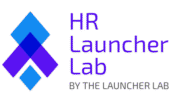
Section 125 plans, commonly known as Cafeteria Plans, allow employees to pay for certain benefits with pre-tax dollars, reducing their taxable income and increasing their take-home pay. These IRS-regulated plans are widely used by businesses to offer competitive benefits while reducing payroll tax liabilities.
With major changes coming in 2026 under the One Big Beautiful Bill Act (OBBBA), including a significant increase in Dependent Care FSA limits, employers need to understand how to structure, implement, and maintain compliant Section 125 plans.
This comprehensive guide covers everything businesses need to know about Section 125 cafeteria plans, with detailed focus on FSAs, HSAs, and the critical 2026 updates affecting employers.
- What is a Section 125 Plan?
- Types of Section 125 Benefits
- 2026 FSA Contribution Limits: Major Changes
- Understanding Flexible Spending Accounts (FSAs)
- Premium-Only Plans (POP)
- Health Savings Accounts (HSAs) Under Section 125
- Commuter Benefits (Transit and Parking FSAs)
- Advantages of Section 125 Plans
- Compliance Requirements for Section 125 Plans
- How to Set Up a Section 125 Plan
- Common Mistakes to Avoid
- Final Thoughts: Is a Section 125 Plan Right for Your Business?
- Next Steps for Implementing a Section 125 Plan
- Resources and Professional Support
- Read More about Compensation & Benefits
What is a Section 125 Plan? #
A Section 125 Cafeteria Plan is a tax-advantaged benefit program authorized by the Internal Revenue Code that allows employees to choose between cash compensation (taxable income) or certain qualified benefits paid with pre-tax dollars. By opting for pre-tax benefits, employees lower their taxable wages, leading to reduced federal income tax, Social Security (FICA), and Medicare taxes.
The term “cafeteria plan” comes from the concept of employees selecting benefits from a menu of options, similar to choosing items from a cafeteria line.
Disclaimer #
The information on this site is meant for general informational purposes only and should not be considered legal advice. Employment laws and requirements differ by location and industry, so it’s essential to consult a licensed attorney to ensure your business complies with relevant regulations. No visitor should take or avoid action based solely on the content provided here. Always seek legal advice specific to your situation. While we strive to keep our information up to date, we make no guarantees about its accuracy or completeness.
This content may contain affiliate links, meaning we receive a commission if you decide to make a purchase through our links, at no cost to you.
For more details, refer to our Terms and Conditions.
